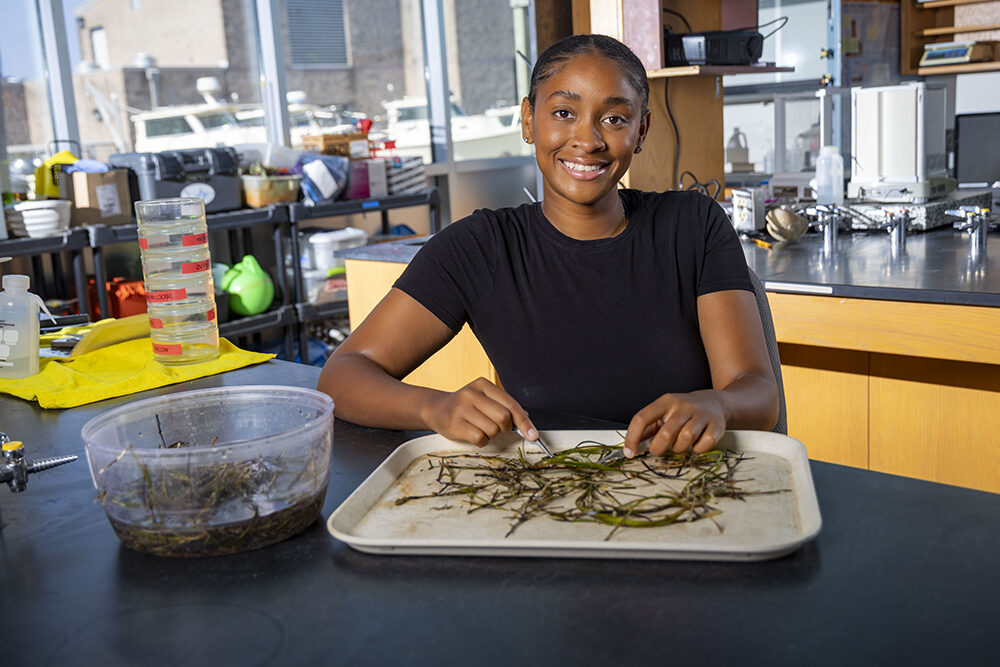RUNC: Kamya Bates
Kamya Bates studies one of the coast’s most valuable resources: seagrass.
By UNC Research
September 10, 2025
Natural Sciences · Research Uncovered

Impact Report

Kamya Bates conducts research at the UNC Institute of Marine Sciences, which offers immersive research experiences along the N.C. coast and has trained 500+ Carolina students.
N.C. is home to 100,000 acres of seagrass and has lost about 6,000 acres over the past two decades, according to the N.C. Department of Environmental Quality. Just 100 acres can support 80,000 fish and 100 million small invertebrates.
Kamya Bates is a master’s student in the Department of Earth, Marine, and Environmental Sciences within the UNC College of Arts and Sciences and a student researcher at the UNC Institute of Marine Sciences. She studies how seed density affects the growth of eelgrass — an underwater plant that provides food, shelter, and oxygen for coastal ecosystems — in North Carolina.
How did you discover your specific field of study?
When I was younger, I spent a lot of time with my grandmother, and she had a massive collection of VHS tapes. My favorite by far was “Free Willy.” On top of that, my grandfather would often take me to Surfside Beach, Texas. That’s where I learned how to fish, spent hours on boats, swam off the dock, and went to the beach whenever he could put up with all the sand in his truck. From a very young age, I knew the ocean was where I felt the most at peace.
One day, while I was bored at home, I decided to look up how to save all the dolphins. Google told me I needed to become a marine biologist — and that was it! I went on to get my bachelor’s in marine science, and through a fellowship with the Thompson Earth Systems Institute, I learned that you could actually make a career out of researching the ocean.
Academics are problem-solvers. Describe a research challenge you’ve faced and how you overcame it.
Two words: data analysis. During my undergraduate degree, I took multiple courses on it, but doing analysis on your own project is a whole different story. I’m currently analyzing my data and have spent many nights running into errors in R.
I’ve been able to work through it by leaning on resources like past data analysis classes, textbooks, and advice from scientists I look up to. Data analysis is hard, but not impossible — or at least that’s what I keep telling myself every night. And honestly, I really enjoy seeing whether my initial hypotheses were right (or wrong).
Describe your research in five words.
Seeds for seagrass: restoring populations.
Who or what inspires you? Why?
My biggest inspiration is my mother. From a very young age, she always stressed the importance of education and always poured into me. It wasn’t easy being a single mom to three rambunctious girls, but she did it with a grace I aspire to have one day. She is my number-one fan, and anytime I’ve wanted to give up she’s always been there to pick me up.
If you could pursue any other career, what would it be and why?
A museum curator. My love of science and history began during visits to the Houston Museum of Natural Science. Curating exhibits would let me satisfy my curiosity, tell stories, and spend my days in one of my favorite places.
Research UNCovered delves into the lives of Carolina researchers from all disciplines and career levels, showcasing not only their research prowess but personal experiences in academia and beyond. Read more RUNC features here.
